After COVID-19, we all know that the online food business boomed as more and more people wanted contactless meals.
Marketers market food ordering and delivery services as a boon for individuals who struggle to prepare a substantial dinner after a demanding workweek.
There are numerous online food businesses that are performing well, particularly after these pandemics.
People have developed a habit of ordering food, which will almost certainly become the new normal post-pandemic. Many food delivery brands are performing well despite the crisis.
Starting a food delivery business might be difficult. But with a good idea and team, you can succeed.
In this blog, we will discuss the factors you should consider when starting your own food delivery business in 2024.
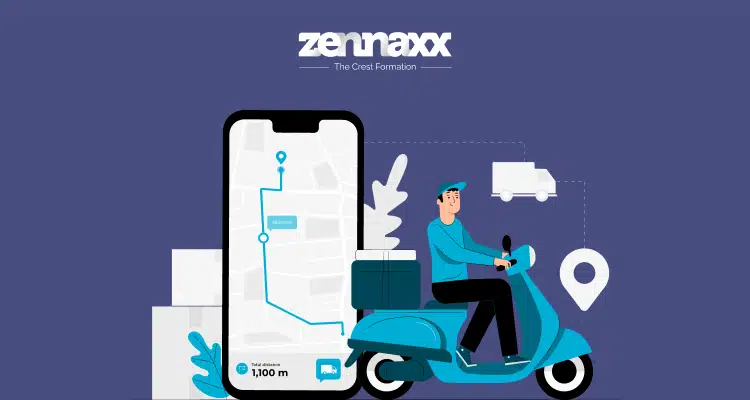
Is It Worthwhile Investing in a Food Delivery Business?
Investing in food delivery is more appealing nowadays. Customers want convenience and variety. Thus, internet food ordering is growing worldwide.
Real-time tracking, variety of cuisines, and ease of use make online meal delivery services popular.
By 2024, this need will drive the US$1.22 trillion online food delivery industry. Statista predicts that the meal delivery market will have 2.8 billion consumers by 2029.
This demonstrates the industry’s significant growth potential.
As user penetration rises to 29.8% by 2024, entrepreneurs can profit. Meal delivery services may be profitable due to customer preferences and market trends.
Food Delivery Business Models to Choose From
Selecting the food delivery app business model that best fits your type of business is necessary before you start developing the app.
We are sharing three types of business models :
1. Aggregator business model
Aggregator-based internet meal delivery firms allow multiple restaurants to register and operate on a single platform.
This business model integrates restaurant services into a portal. This model connects customers and restaurants via the platform.
It goes without saying that the exponential growth of food delivery giants such as Uber Eats, Just Eat, and Delivery Hero, which have all adopted the aggregator model, has had a consequence.
1.1 Advantages of Aggregator Model
A. Lower Startup Risks
The integrated architecture allows platform owners to collaborate with restaurants independently of delivery capabilities, eliminating uncertainty.
B. Variety increased
The integrated model enhances the platform’s food outlets by including restaurants with or without delivery fleets, offering more meals and options for customers.
C. Improved customer experience
The more food alternatives, the better the customer experience, and the more competitive the platform.
1.2 Challenges of Aggregator Model
A. Delivery Streamlining
Streamlining delivery processes and assigning orders based on restaurant fleet availability is a fundamental challenge for integrated meal delivery organizations.
B. Logistics Complexity
Coordinating deliveries from restaurants with different delivery capacities can cause logistical issues and delivery delays.
C. Solution Needed
To overcome these problems, entrepreneurs must invest in feature-packed online food delivery systems that allow administrators to manage delivery operations and assign deliveries to restaurants with a sufficient fleet.
2. Order and delivery model
This business model involves an admin or platform owner, merchants or restaurant owners, and a delivery service provider.
The third party delivers food in this scenario. A courier or logistics company works with the platform owner to deliver food to customers. Delivery service providers establish order delivery fees. Zomato and Swiggy are the best examples of it.
2.1 Order and delivery Model Benefits
A. Cost Efficiency
This food delivery concept favors companies without delivery fleets. By using a courier service, the platform owner can reduce delivery manpower and fleet management costs.
B. Simplified Operations
Platform owners delegate meal delivery tasks to third-party logistics services using the order and delivery approach.
This lets the admin handle customer service and marketing instead of deliveries.
C. On-Time Delivery
The platform owner can ensure timely and effective food delivery by using a third-party logistics service that solely delivers.
This constant delivery can enhance client satisfaction and loyalty, benefiting the firm.
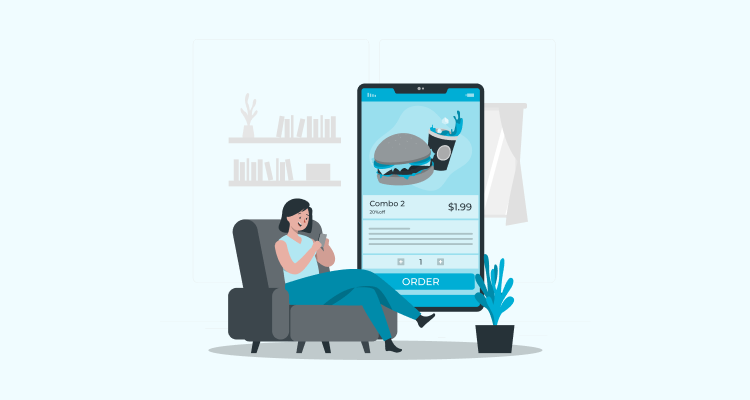
2.2 Order and Delivery Model Challenges
A. Integration Complexity
Integrating delivery with other food delivery platforms is a significant challenge for enterprises using the order and delivery approach.
Order placing, payment processing, and delivery coordination require careful preparation and execution.
B. On-boarding/Management
Logistics service delivery agent onboarding and management is a challenge.
Managing several delivery staff in different locations makes scheduling, training, and performance management challenging.
3. Full-service business model
A full-service business model involves on-site operations. This requires more than simply an app or delivery drivers. Chefs frequently cook in ghost or cloud kitchens.
These establishments focus on delivery, not dine-in. The internal process will incur significant costs.
Both individuals and businesses can use this platform.
With this strategy, customers can customize metabolic meals, administer corporate meal programs, and distribute healthy delights to workplaces.
Domino’s and McDonald’s are two successful examples of this business model.
3.1 Full-Service Business Model Benefits
A. Streamlined Operations
When one company orders, cooks, and delivers meals, blockages are easy to spot and fix.
B. Complete Control
Users don’t require third-party services to improve their experience. Your company controls every area of operations, giving you greater customization and flexibility to suit consumer needs.
3.2 Full-Service Business Model Challenges
A. Price and menu changes
The restaurant controls its menu and pricing, so changes may be frequent. This may confuse clients and necessitate frequent marketing and online platform enhancements.
B. Expensive Setup
Because only one service provider prepares and delivers food, this approach has a significant set-up cost.
C. High courier costs
The high cost of courier services makes it difficult for many enterprises to turn a profit with this business model.
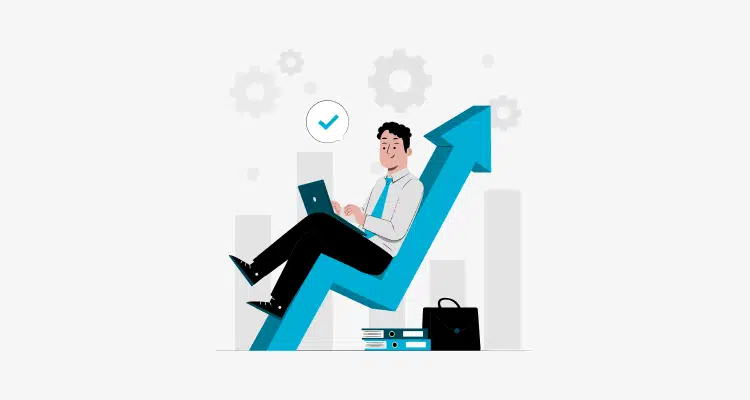
How to Start an Online Food Delivery Business?
Thinking about creating a food delivery app once you’ve decided on a business model? The concept is smart and has a high chance of working.
But before you start, make sure you know the market, your competitors, and any problems you might face. Carefully planning things out will help you succeed.
This is a simple plan to help you begin your food delivery business
1. Market Analysis
Start by learning as much as you can about the food delivery market.
This information will help you develop the selections for your application and turn your business into a successful enterprise.
Learn about the complex ways that markets work in order to come up with a strategic entry plan.
2. Competitor Analysis
Learn about the platform-to-consumer and restaurant-to-consumer companies. They have a lot of control over food delivery services.
When deciding how to position your business among competitors, look closely at how they set their prices. Also, look at what they offer on their online menu and how they advertise.
You can set your business apart from the competition and get more customers. Doing this depends on knowing their strengths and weaknesses.
3. Opportunities and Threats Assessment
A SWOT (Strengths, Weaknesses, Opportunities, and Threats) analysis can help you see how your company stacks up against others in the same field.
If you use this analysis, you can make the most of your strengths, fix your weaknesses, take advantage of new opportunities, and protect yourself from possible threats.
4. Target Audience
It is very important to know for whom you are developing your application. For restaurants that already exist, it’s about keeping their customers.
For new businesses, though, it’s important to pick a market where you can make the most of your efforts. Show off your unique app layout and satisfy your target customers.
Layout is key. Matching your products and services to your audience’s tastes will make them happier. It will also boost loyalty.
This will lead to corporate success. Knowing your demographic and tailoring your menu to their likes is the best approach to engage and satisfy customers.
Ready to Launch Your Own Food Delivery Startup?
Let’s Build Something Amazing Together! Contact Us Today to Get Started on Your Custom App and Elevate Your Business to New Heights!
5. Determine your cost and budget
Food delivery services cost $2,500–$30,000 to start. Monthly operating costs range from $500 to $10,000. The main costs of starting and sustaining a meal delivery firm are
Inventory
Opening a restaurant requires a space, cooking equipment, decorations, and flooring. Cloud or virtual kitchens are cheaper if money is tight.
You may spend less on stocks after this. Starting with a lesser inventory and adding to it often may help your restaurant expand.
Technology costs
Starting a meal delivery app from the start costs $25,000–$200,000. App complexity, builder, and location affect cost.
Hire an expert food delivery app developer to save money. You may be able to tweak their template or platform to save a lot of money.
Business Insurance and License
Licenses and insurance cost more to establish a meal delivery service. Commercial auto and liability insurance may be needed.
Some states mandate firms to have workers’ comp insurance. Remember that these rules may change, so always know them.
Costs of marketing
Advertising your meal delivery service costs more. Advertise to many people online with banners, emails, social media, and other avenues. Fund these ventures with a marketing budget.
Logistics
A food delivery service has logistical costs. Starting a delivery service is expensive. You’ll need cars and drivers. Third-party delivery services charge 15%–20% every order.
6. Sort out your licenses
You probably already have all the licenses you need if you run a restaurant in Canada.
However, if you’re just starting out, it’s advisable to consult your city clerk. You can ask them what licenses you need.
You can learn more about provincial licenses and permits on the website of the Ministry of the Canadian Government and could also contact the Canadian Federation of Independent Business (CFIB).
Each province or territory may have its own set of rules.
7. Set up order-receiving channels
People can place orders with your restaurant through phone calls, text messages, WhatsApp, emails, websites, apps, and social media.
Social media can be an effective tool for both order collection and business promotion.
You can use food delivery software to make a website. It can also help you manage orders and make deliveries quickly.
This could help you run your business more smoothly. Locate software that can track your items using GPS and connect to a point-of-sale (POS) system.
You may also want to look into apps that deliver food and charge a flat fee per order, or a percentage of total sales.
8. Set up delivery methods
Food delivery businesses should consider several factors while setting up delivery techniques for the best service.
Determine the optimum food delivery timing. Consider when and what locals consume. Find out when your meal delivery service works best—lunch, dinner, or late at night.
Select city or nation regions to service. Choose between local city deliveries and nationwide shipping. The appropriate day of the week makes deliveries easier.
Look at traffic and demand to discover the optimal delivery days. Consider whether you will deliver late at night to serve more clients.
Food delivery should be planned around the weather. Do not deliver in inclement conditions, which could affect food quality and driver safety.
Follow local weather forecasts and adjust delivery times. Plan your operations around significant events or holidays to serve customers quickly.
9. Promote your brand
Inform people about your new meal delivery service as soon as you’re prepared. Use a range of channels to inform your clients.
You can utilize tools to track the reactions of your postings to your social media ads. Through SMS or WhatsApp messaging, you may notify users about discounts, chef specials, and daily bargains.
Food delivery firms frequently offer free internet marketing techniques that are quite effective. These consist of email templates, loyalty schemes, and push alerts.
By describing your food preparation process to your consumers, you can show them how hygienic and germ-free your kitchen is.
Make sure the people who deliver for you are courteous and punctual. Providing excellent service will promote your brand.
Want to Automate Your Business Process With a Software Solution?
Zennaxx, a leading software development firm in Canada, has delivered 700+ bespoke solutions spanning various industries.
What are the Benefits of Starting a Food Delivery Business?
Advantages of starting a food delivery business
More Customers
Food delivery companies can get more customers by offering delivery as well. Getting new customers and keeping the ones you already have is possible.
Increased Revenue
Using food delivery services can help you make more money. Making delivery processes more efficient, such as using a route planner like Upper, can help you cut costs. Getting new customers and returning old ones is another way to make more money.
Scalability
Starting a food delivery business gives you the chance to grow. After making a plan, you can expect things to go as planned.
It doesn’t need a big investment to start, and it’s easy to grow and change.
Cost-effective
As your business grows, you can gradually expand beyond the minimal resources required at first.
You can take things one step at a time and worry less about reaching your goals. Beginning a food delivery service is feasible for both small startups and large corporations.
Monetize Your Food Delivery Business Through Different Channels
Here’s how you can make money with your food delivery business through various channels
Restaurant Fees
Your platform should charge restaurants and eateries to show their ads or menus. The more they pay, the better spot they have on your app. You’ll bring the food to them and show it off on your platform.
Commission on Orders
Receive a commission of 15 to 20 percent on every meal order that goes through your service. You get a cut of every order that goes through your platform.
Delivery Charges
Customers typically cover the delivery charges. The customer pays for the food and has it brought to them. The amount may vary depending on how far and where the delivery is going.
Advertisement
Businesses and brands should be able to advertise on your app. Your users will see their ads because they paid you to do so. For your platform, this could be a big way to make money.
How Can Zennaxx Help in Launching Your Food Delivery Business?
Initiate your on-demand food delivery business by collaborating with an app development company.
For instance, you could work with Zennaxx, a firm based in Canada. Our primary goal is to develop unique solutions that go beyond simply satisfying your requirements. Many international brands have collaborated with Zennaxx.
You can work with Zennaxx to create a food delivery application. We will support you during every step of the development process and help you take your company to new heights.
To begin developing a food delivery app, get in touch with us right now.
FAQs
- How much time does it take to create an app for food delivery?
- Food delivery apps take 2–4 weeks to develop. Complexity of the software and desired features will affect the timeline.
- What features should my food delivery app have?
- Your app should have basic features like menu options, home page customization, and location services. It’s also good to have customer reviews, different payment options, and more.
- Should restaurants start their own delivery service?
- Yes, if you own a restaurant, starting a delivery service can help it grow. It enables you to reach customers who can’t come to your restaurant. Some people prefer food delivery over dining out, so it can also attract new customers.
- Can you make money with food delivery?
- Food delivery businesses can make money, depending on where you are and how fast your business grows. A few experts say it’s possible to make $30,000 by using a food delivery app, which is normal.
